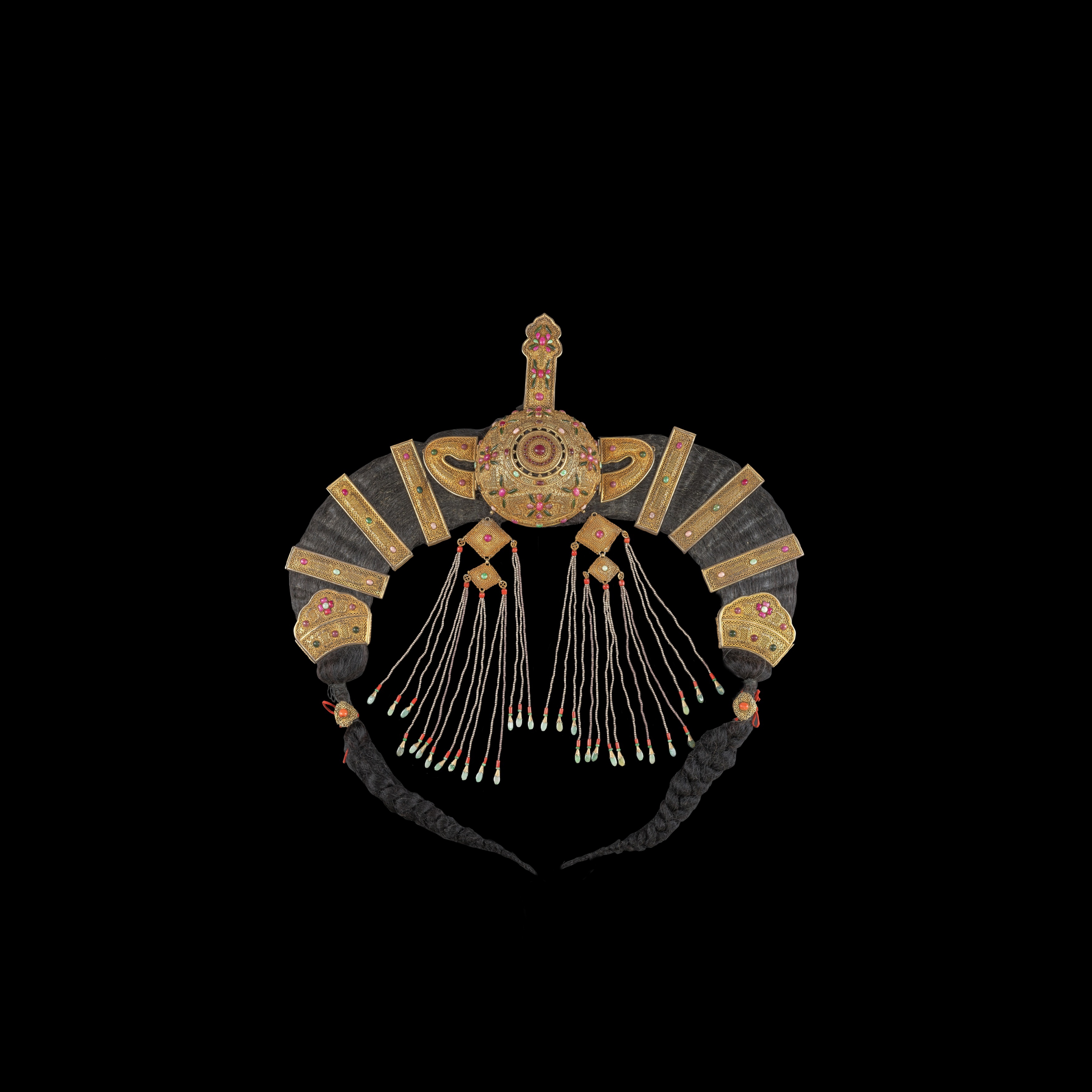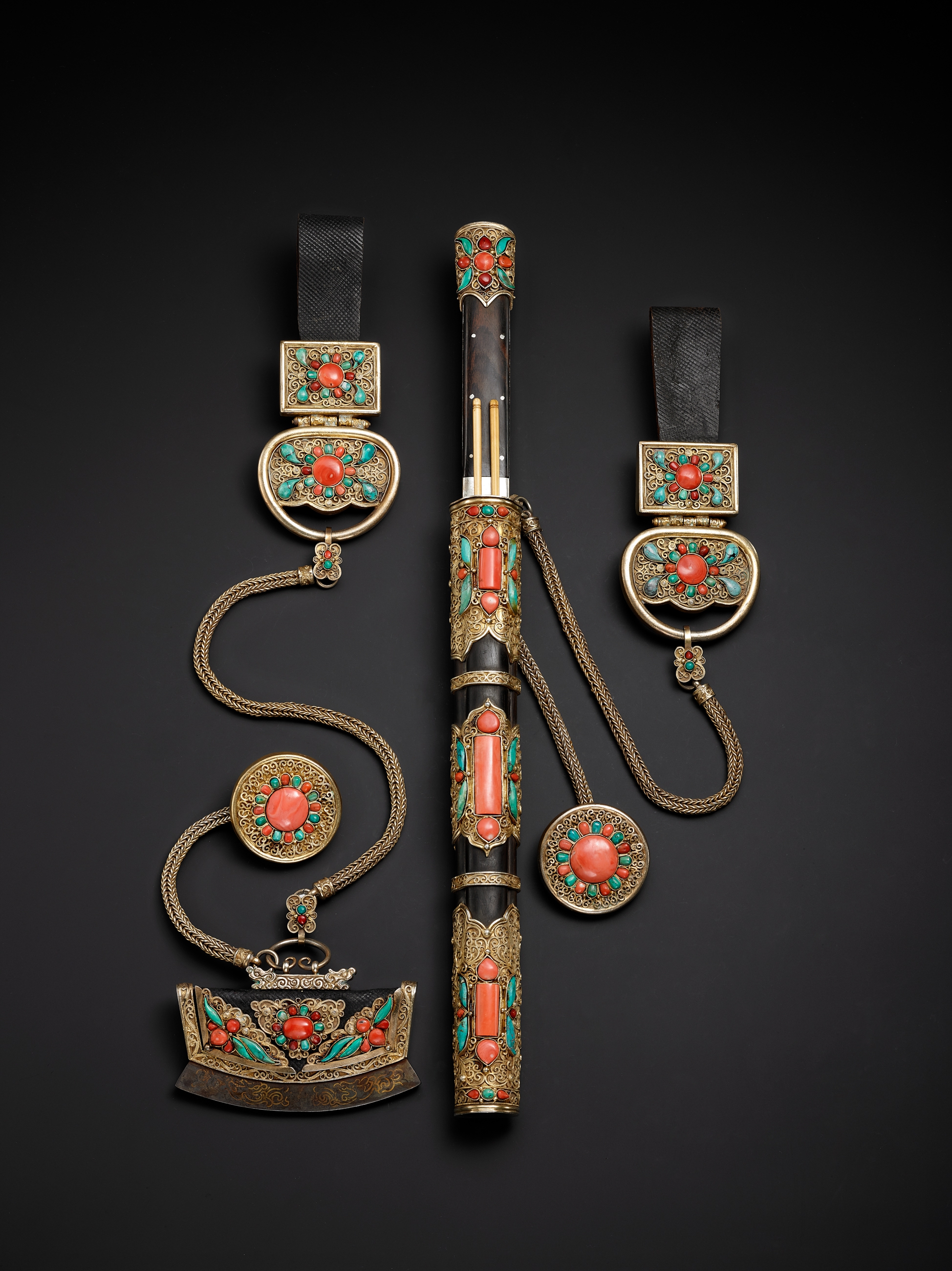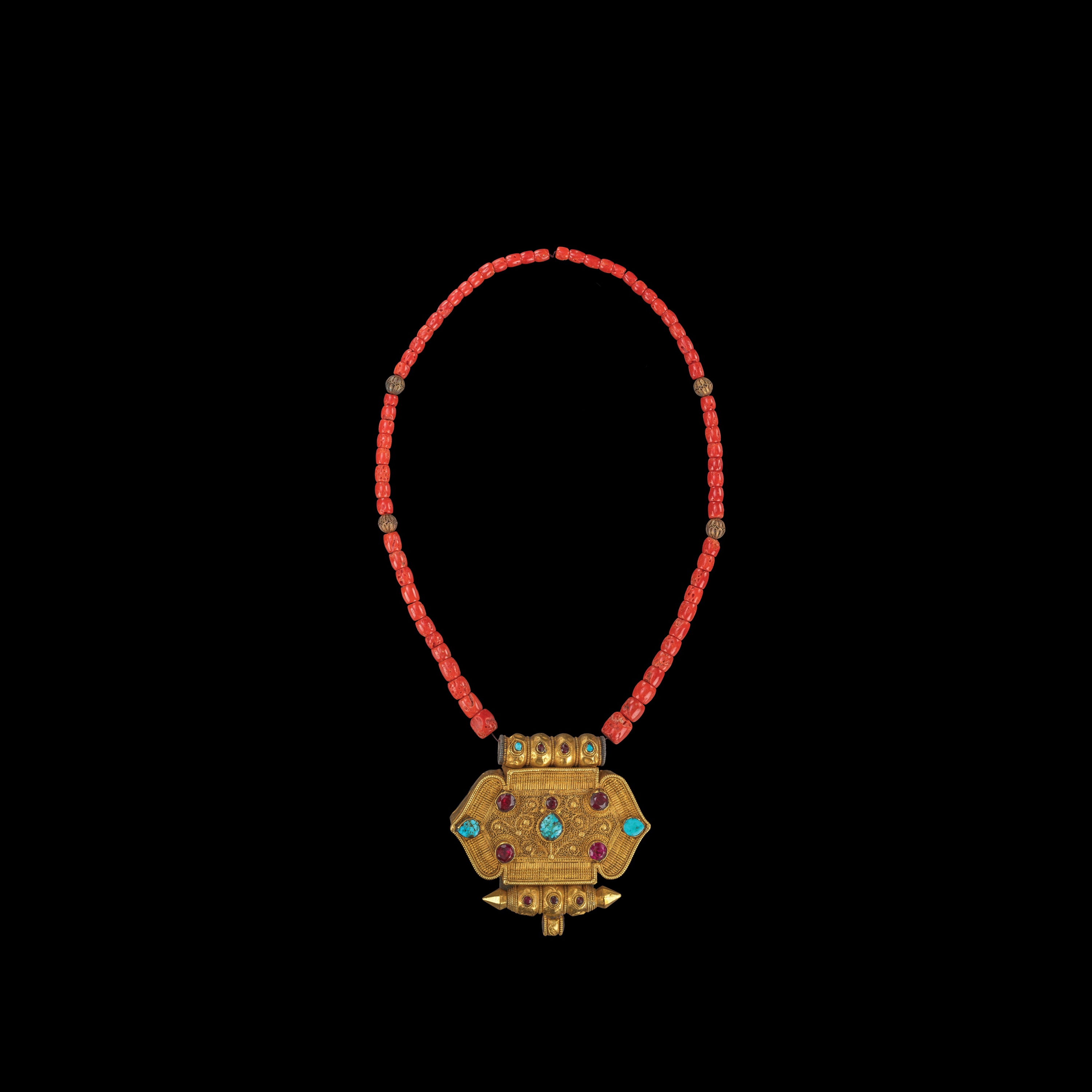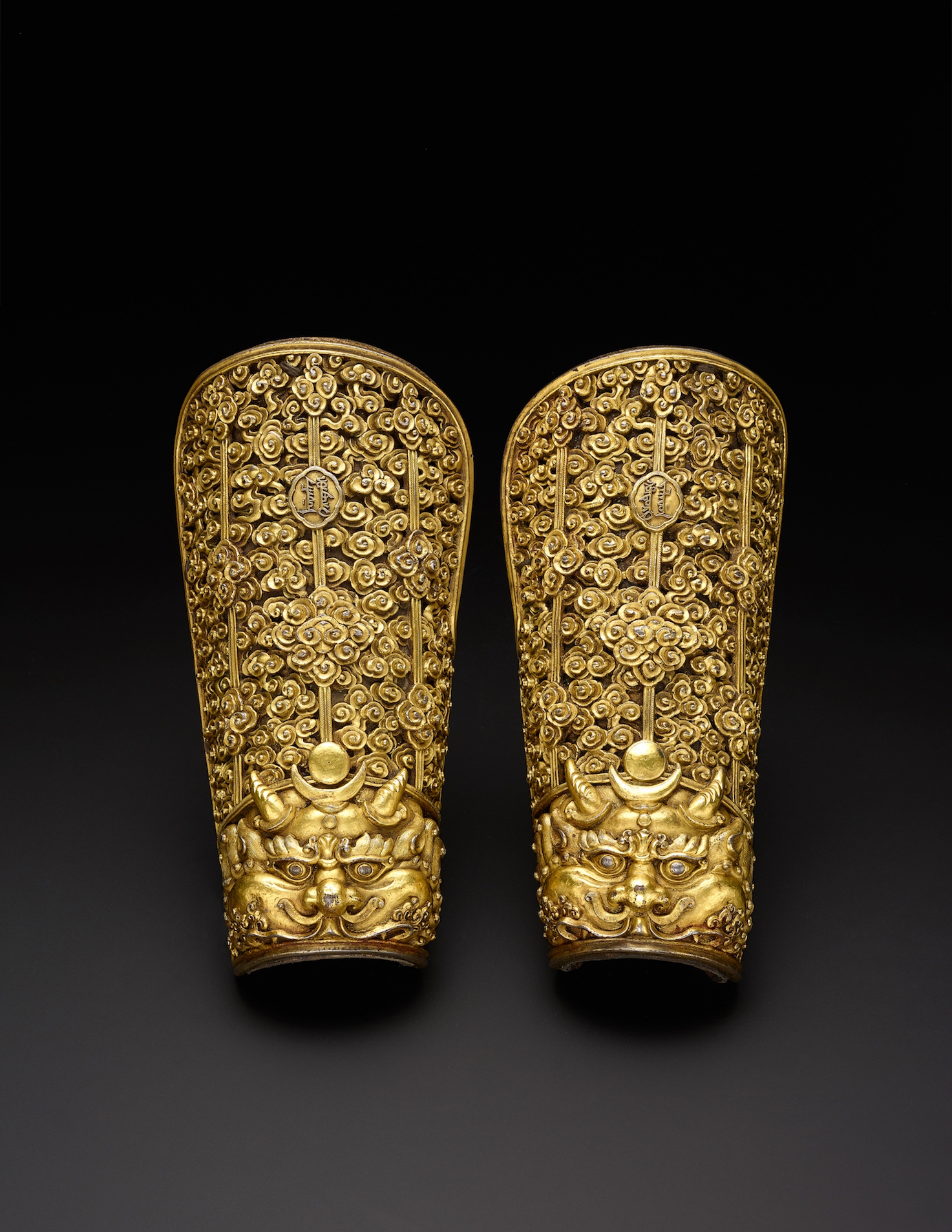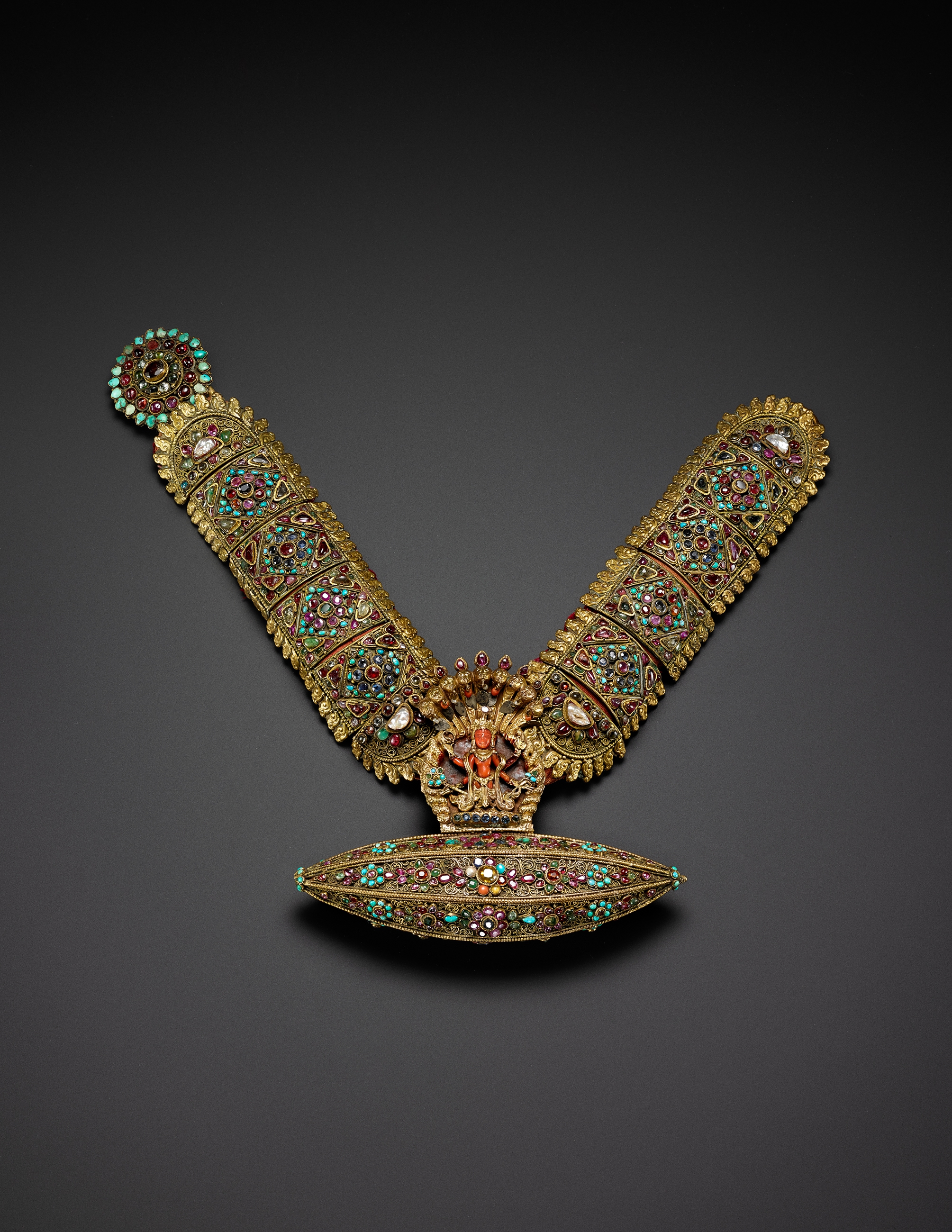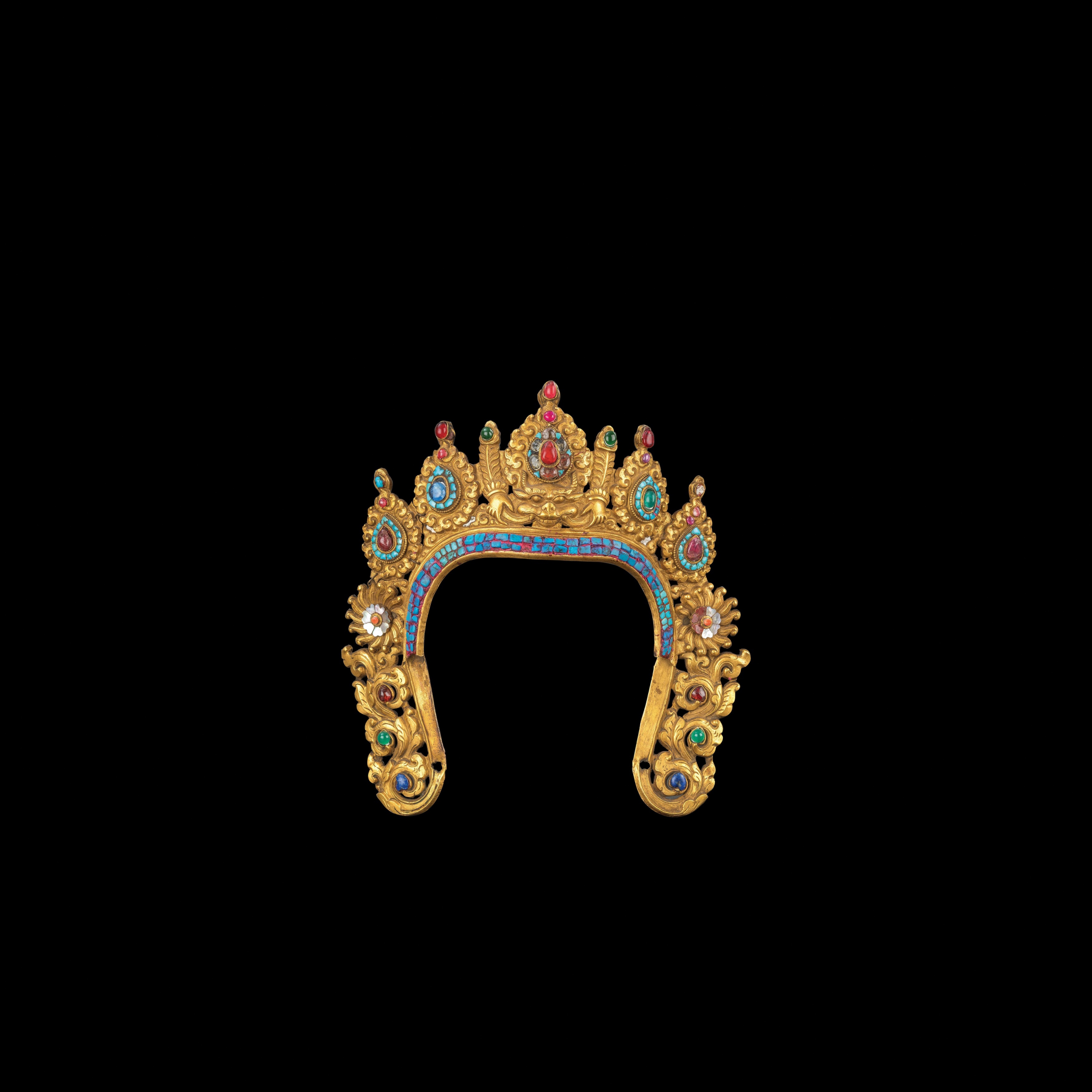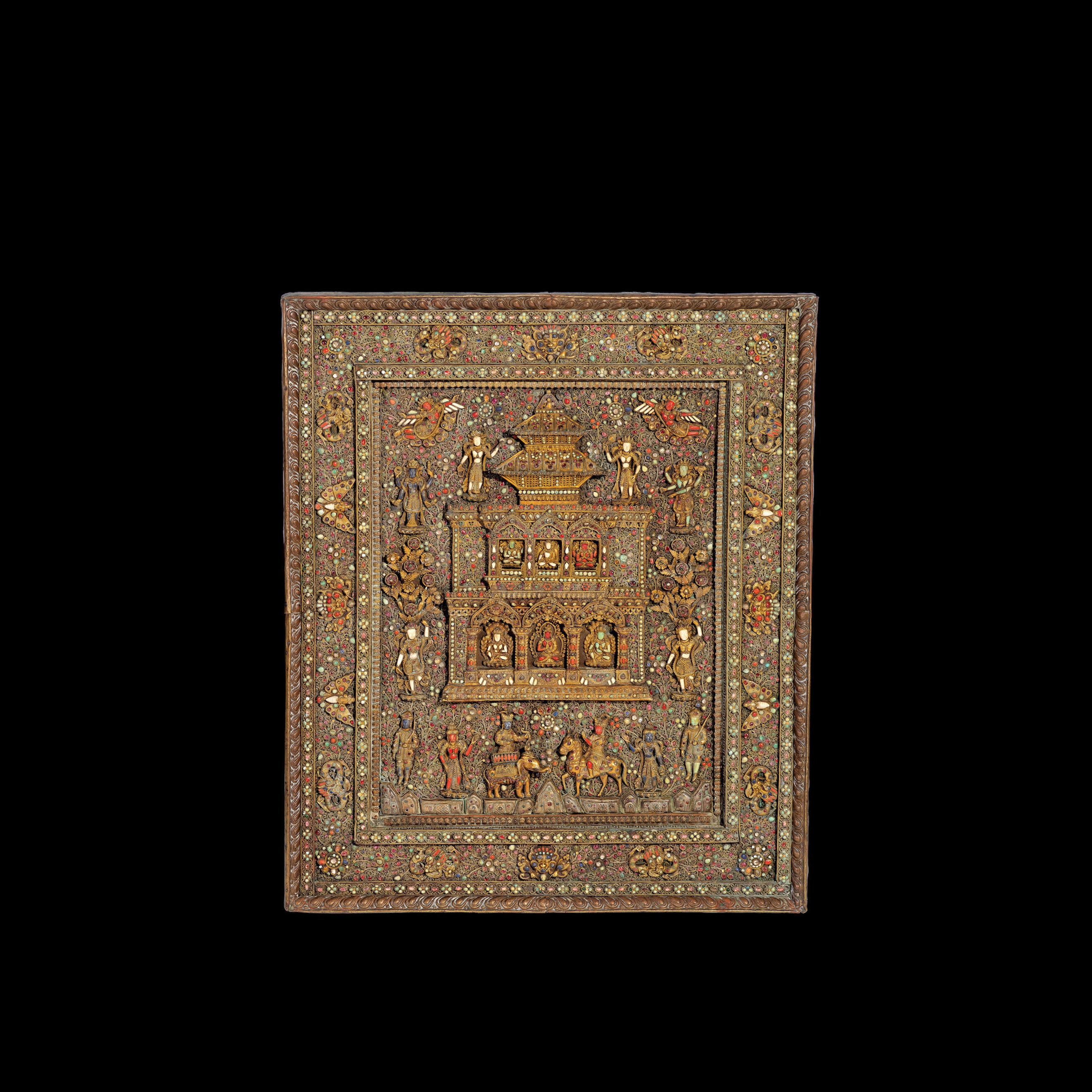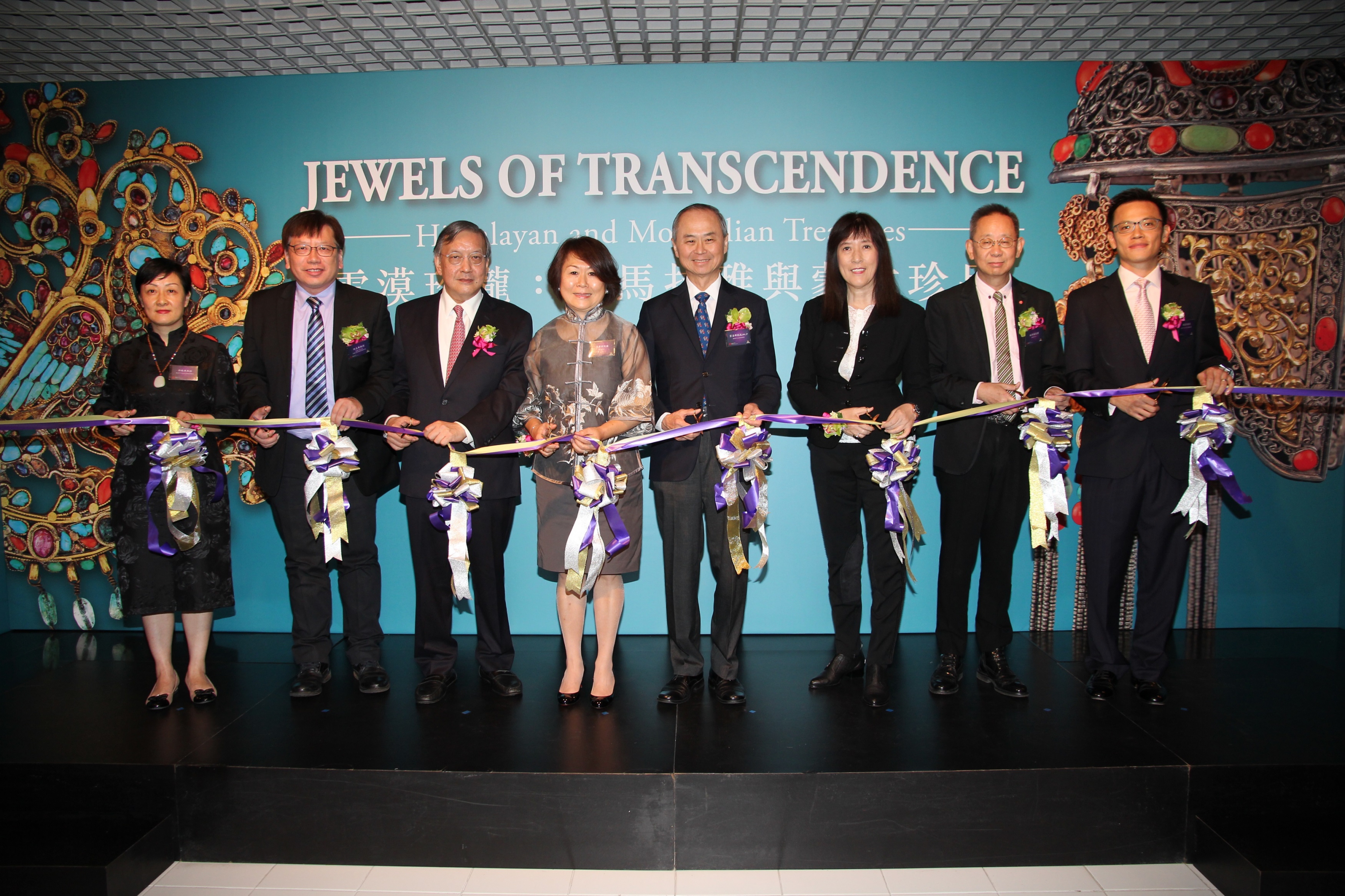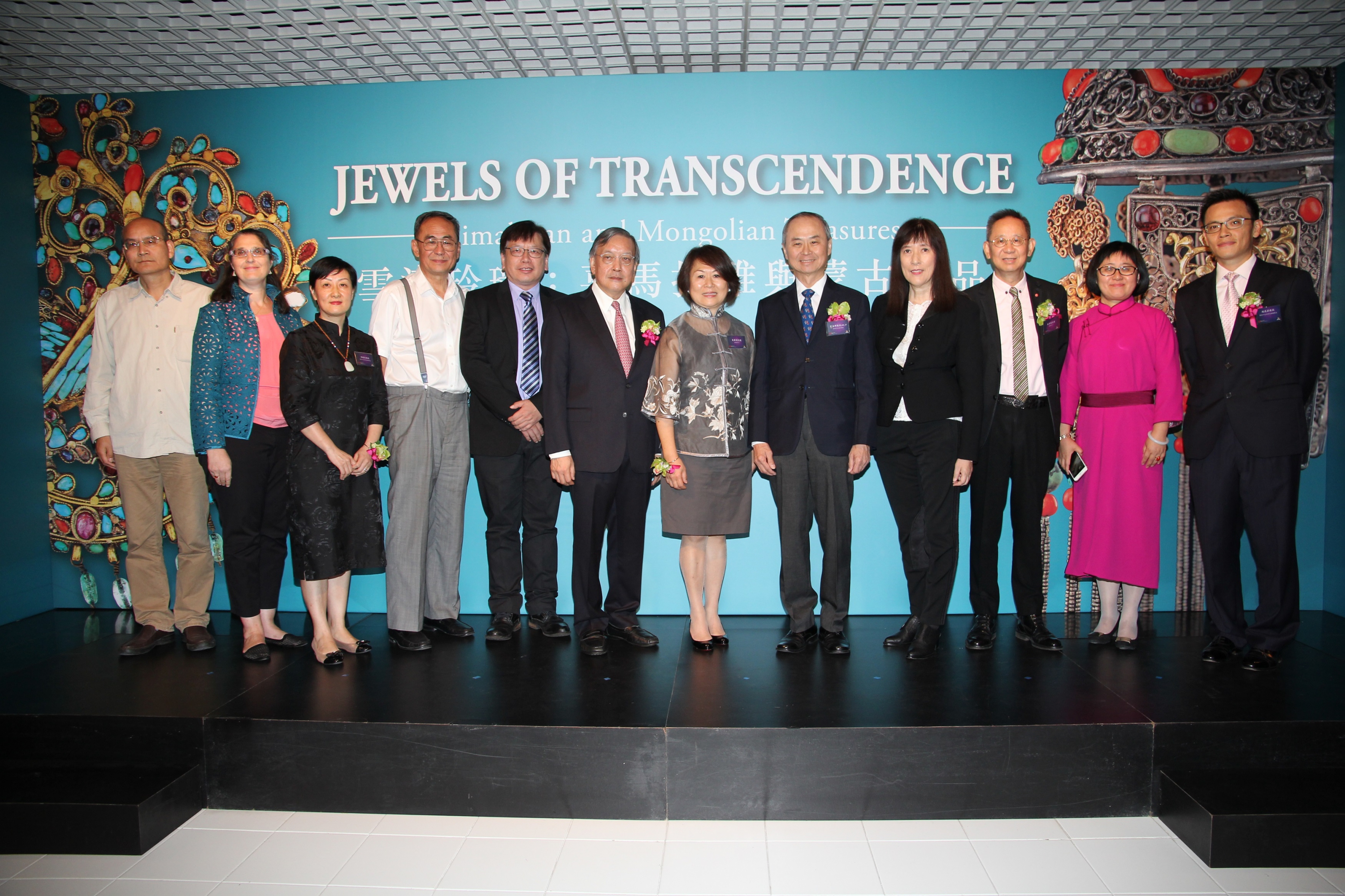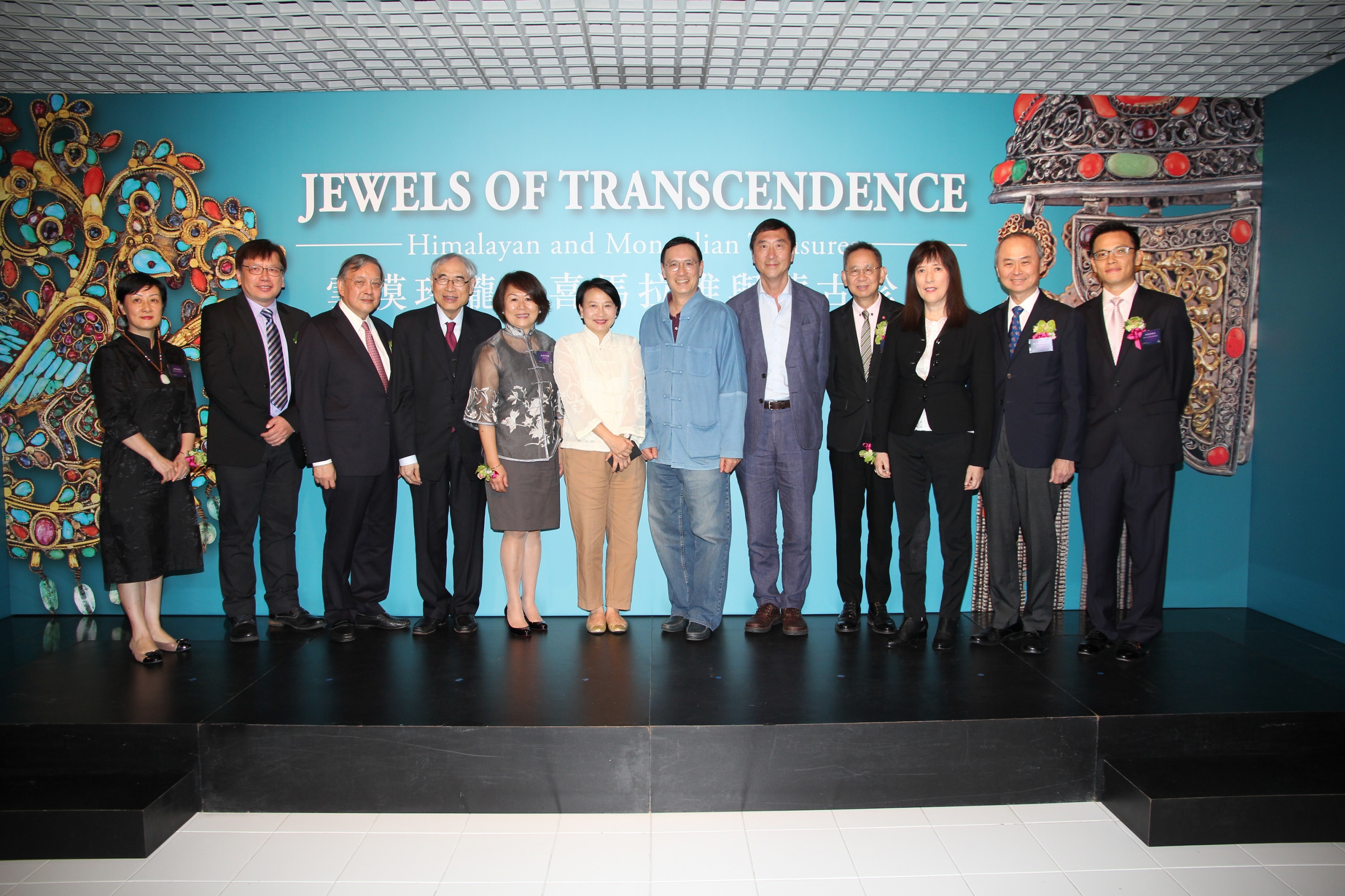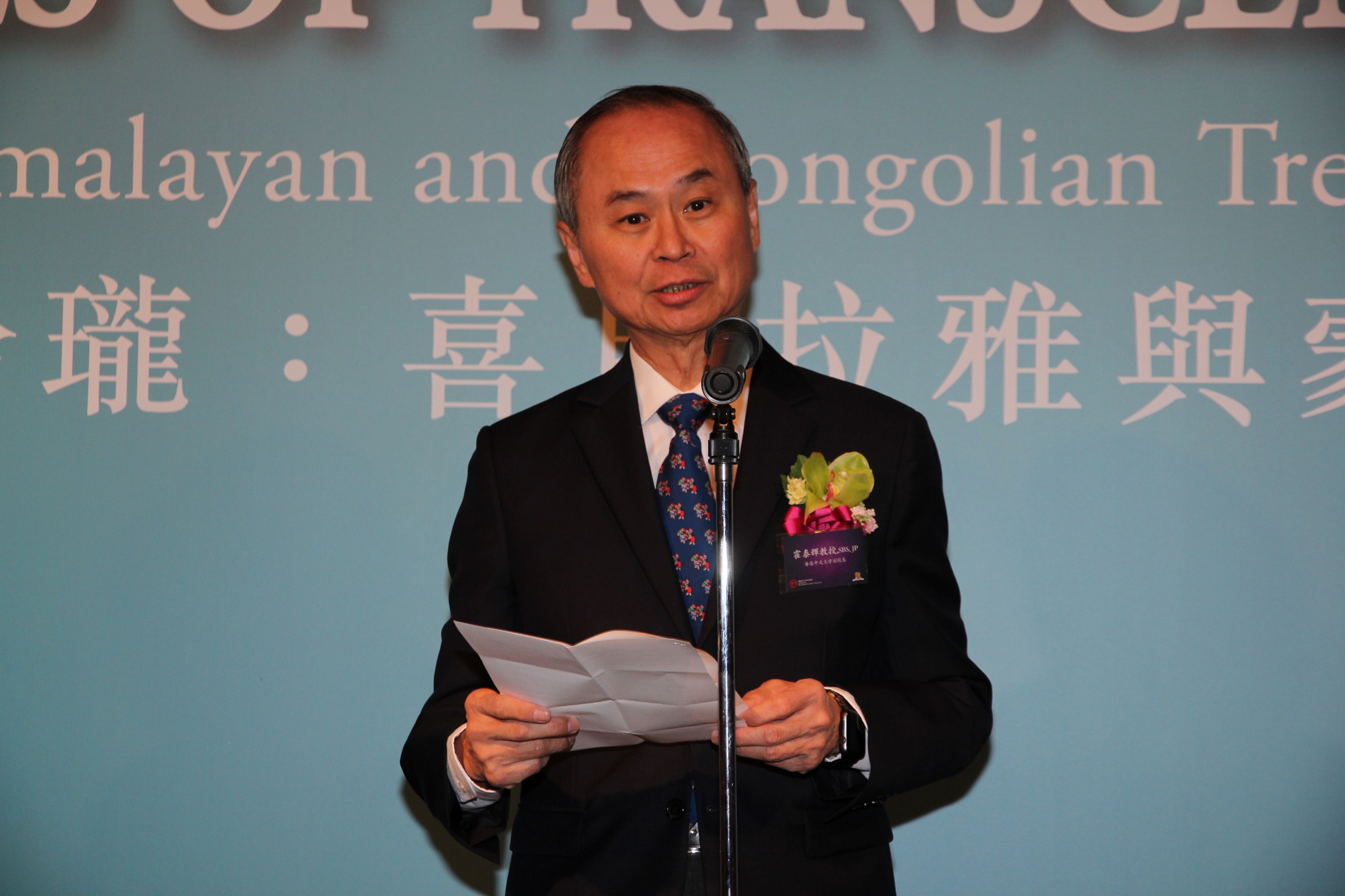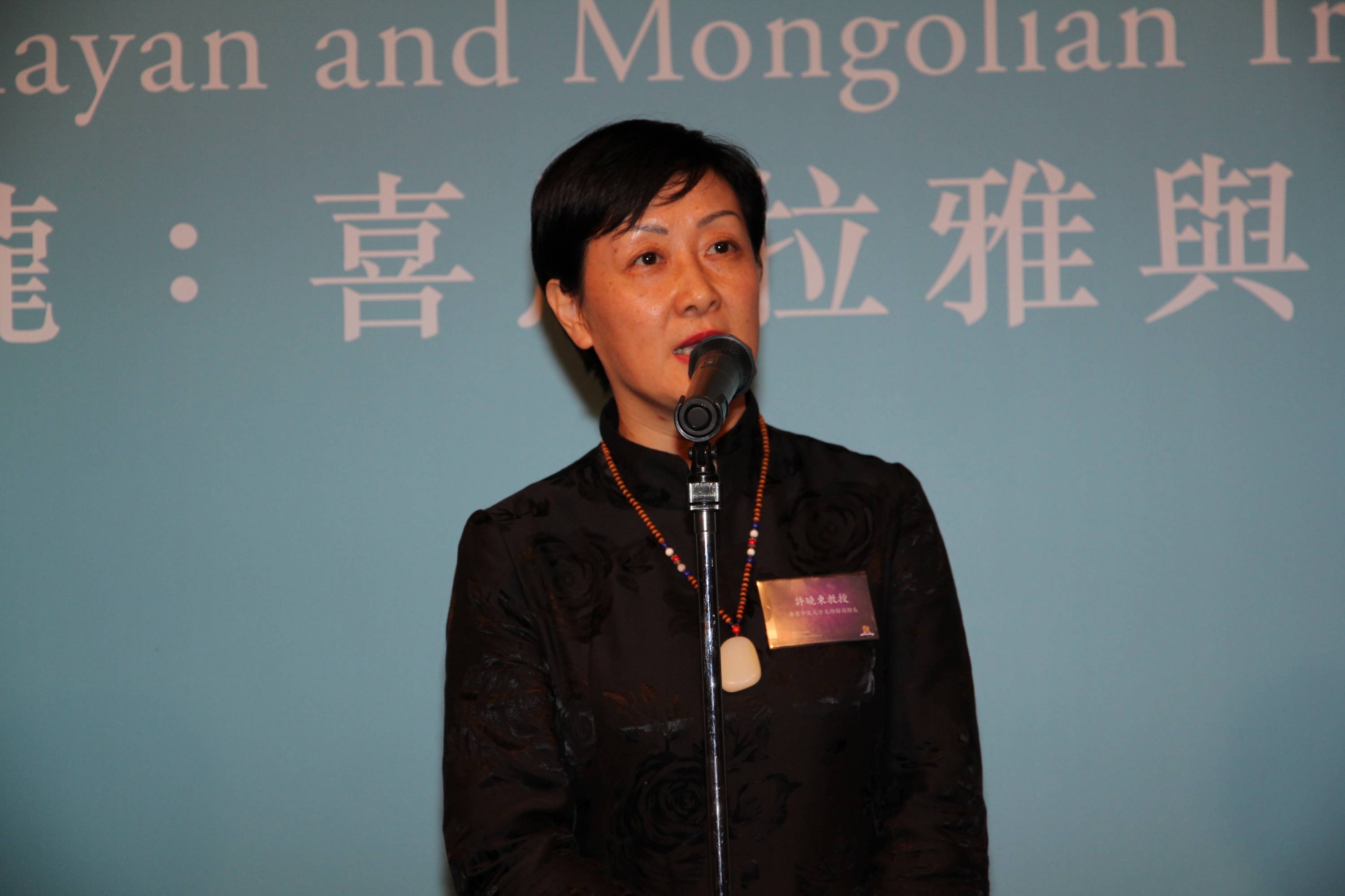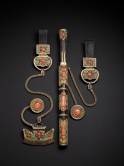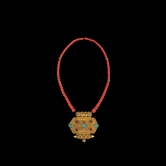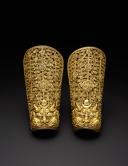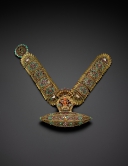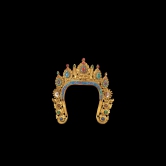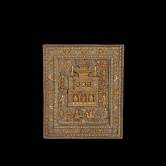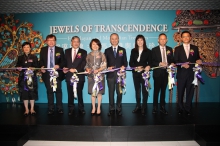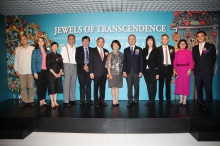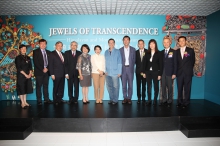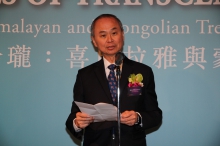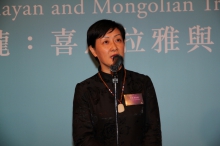CUHK
News Centre
The Religious and Cultural Meanings Behind the Splendid TreasuresCUHK Art Museum Presents Magnificent Ornaments and Religious Objects from The Himalayas and Mongolia
The Art Museum at The Chinese University of Hong Kong (CUHK) presents the exhibition “Jewels of Transcendence: Himalayan and Mongolian Treasures” from 30 September 2018 to 24 February 2019. The exhibition showcases more than 400 beautiful and vibrant ornaments and religious objects from the Himalayan and the Mongolian regions during the 13th to the 20th century, which are part of the Mengdiexuan Collection and the Cheng Xun Tang Collection in Hong Kong. Members of the public are welcome to visit the exhibition. Admission is free.
The opening ceremony for the exhibition was held yesterday (29 September). The officiating guests included Mr. and Mrs. Christopher MOK, owners of Cheng Xun Tang; Mr. and Mrs. Kenneth CHU, owners of Mengdiexuan; Prof. FOK Tai-fai, Pro-Vice-Chancellor and Vice President, CUHK; Prof. HO Che-wah, Acting Director of the Institute of Chinese Studies, CUHK; Prof. YIU Chun-chong, Josh, Director of the Art Museum, CUHK and Prof. XU Xiaodong, Associate Director of the Art Museum and Curator, CUHK.
Neither the vast Mongolian desert nor the snow-capped Tibetan mountains have ever existed in total isolation. Ever since the mid-13th century, Tibet and Mongolia have had meaningful exchanges, be that through military campaigns, political relations, or cultural and religious interchange. Before the 20th century, Tibetans and Mongolians in China were united through the “Tibetan Buddhist Society”. Tibetan lamas served as mentors and masters, the providers of faith and culture, while the Mongolian disciples served as followers, sponsors, and proud defenders. The former embodying mercy, the latter, representing power, created a symbiotic relationship that not only allowed the two nationalities to co-exist, but to thrive as one.
The expansive Himalayan region, also known as the “roof of the world”, is home to a diverse array of peoples. Tibetans, Nepalese, Bhutanese, Gurkhas, and Ladakhs are not only bound together by their common geographic landscape but also by a continuity of religious beliefs. They frequently communicated through an intricate web of political, military, religious and commercial exchanges. Beginning in the 18th century, for example, Newari artisans from the Kathmandu Valley produced objects for their neighboring Lhasa and Shigatse aristocracy and they also traveled near and far, opening workshops in these places.
The artisanship of these two regions is bound together by the affinity for gold, silver, turquoise, and coral, their close attention to detail in their head, neck, and waist ornaments, and the extensive use of filigree, inlay and other delicate metal craftsmanship. The Himalayan art of this time is marked by an inseparable bond between religious and daily life. The ornaments from this region, with their strong Tibetan Buddhist and Hindu elements, captured the unity of man and the divine. Ornaments spoke for the soul and showed outward devotion to the divine. Your eyes will be dazzled by their splendor, but by reaching beyond the object and into the minds of the sand and snow dwelling peoples, a deep understanding of the past can be achieved.
To tie in with the exhibition, the Art Museum has published an appreciation guide and a catalogue in 3 volumes on the collections of Cheng Xun Tang and Mengdiexuan and Proceedings. The former two volumes fall into the sections of the Himalayas and Mongolia and feature 600 pieces (sets) of collections, each taken from Cheng Xun Tang and Mengdiexuan. For facilitating the understanding of arts in The Himalayas and Mongolia, 5 articles are published in the Proceedings. Glossaries on the common decorative motif and old photos of Tibet from the Newark Museum are also available. In addition, the Art Museum has also organised a keynote speech and a seminar, inviting experts from the US, mainland China and Hong Kong to share their study and research on the craftsmanship of the ornaments and comparison of ornamental style in the regions of the Himalayas and Mongolia.
Details of the exhibitions are as follows:
| Date: | 30 September 2018 – 24 February 2019 |
| Venue: | Gallery II & III, Art Museum, The Chinese University of Hong Kong |
| Opening Hours: | Mondays to Wednesdays, Fridays and Saturdays: 10:00 a.m. – 5:00 p.m. Sundays and Public Holidays: 1:00 p.m. – 5:00 p.m. |
| Closed on Thursdays (except Public Holidays) | |
| Enquiry: | 3943-7416 |
(From left) Prof. XU Xiaodong, Associate Director of the Art Museum, CUHK; Prof. HO Che-wah, Acting Director of the Institute of Chinese Studies, CUHK; Mr. and Mrs. Christopher MOK, Masters of Cheng Xun Tang; Prof. FOK Tai-fai, Pro-Vice-Chancellor and Vice President, CUHK; Mr. and Mrs. Kenneth CHU, Masters of Mengdiexuan; Prof. Josh Yiu, Director of the Art Museum, CUHK officiate at the ribbon-cutting ceremony for the exhibition.
(From left) Prof. Li Qinpu, Research Fellow of the Zhejiang A&F University; Dr. Katherine Anne Paul, Curator of the Arts of Asia, Newark Museum; Prof. XU Xiaodong, Associate Director of the Art Museum, CUHK; Prof. Shang Gang, Professor of the Academy of Arts and Design, Tsinghua University; Prof. HO Che-wah, Acting Director of the Institute of Chinese Studies, CUHK; Mr. and Mrs. Christopher MOK, Masters of Cheng Xun Tang; Prof. FOK Tai-fai, Pro-Vice-Chancellor and Vice President, CUHK; Mr. and Mrs. Kenneth CHU, Masters of Mengdiexuan; Ms. Zhang Tong, Research Fellow of the Inner Mongolia Museum; Prof. Josh Yiu, Director of the Art Museum, CUHK.
(From left) Prof. XU Xiaodong, Associate Director of the Art Museum, CUHK; Prof. HO Che-wah, Acting Director of the Institute of Chinese Studies, CUHK; Mr. Christopher MOK, Masters of Cheng Xun Tang; Prof. Lawrence J. Lau, GBS, JP, Ralph and Claire Landau Professor of Economics, Lau Chor Tak Institute of Global Economics and Finance, CUHK; Mrs. Christopher MOK, Masters of Cheng Xun Tang; Mrs. Tse Ling Kit Ching, Cherry, Permanent Secretary for Home Affairs, Home Affairs Bureau; Dr. Chien Lee, Vice-Chairman of The Council, CUHK; Prof. Joseph J. Y. Sung, Mok Hing Yiu Professor of Medicine, CUHK; Mr. and Mrs. Kenneth CHU, Masters of Mengdiexuan; Prof. FOK Tai-fai, Pro-Vice-Chancellor and Vice President, CUHK; Prof. Josh Yiu, Director of the Art Museum, CUHK.


